Nearly every country counts some kind of sweet fried dough among its desserts. Americans eat doughnuts, Indians have gulab jamun, the French make beignets, and I’ve already written about fritule, Dalmatian fritters. Lithuanians are no exception, and in his class on Eastern European desserts at the Institute of Culinary Education (which I have mentioned previously), Michael Laiskonis offers his own interpretation of spurgos.
In Lithuania, spurgos are typically varškės spurgos, farmer cheese fritters (with a lot of farmer cheese and a little bit of flour), dusted with sugar, prepared for holidays and special occasions. But Michael took a rather different approach, ditching the farmer cheese altogether for a more western dough (with a lot of flour and a little bit of milk), and filling the fried balls with pastry cream. And that pastry cream, made with vanilla beans and poppy seeds, turns the humble fried dough into a dessert that even the doughnut-skeptic won’t resist.
It does bother me a little, however, to make farmer cheese fritters without farmer cheese, if only because without it, I could just as easily call them beignets, fritule, or churros. On the other hand, if I follow a traditional recipe for varškės spurgos, the fried dough is slightly too dense to allow for piping a generous amount of pastry cream inside — a terrible First World problem.
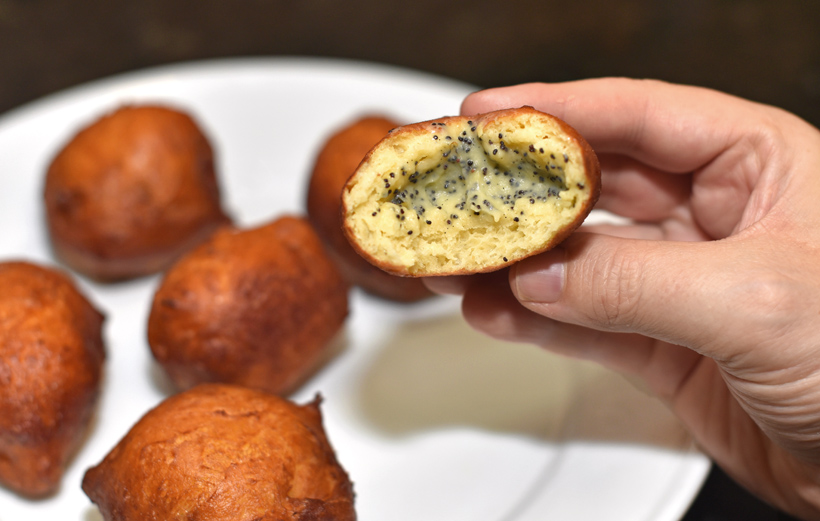
So I’ve come up with a recipe somewhere in between Lithuania and Laiskonia, combining the ingredients of both. I reduced the proportion of farmer cheese compared to traditional recipes like the one in Beata Nicholson’s Taste Lithuania, but it’s still a pretty substantial amount. Like Michael, I’ve replaced baking powder with yeast, and use a blend of all-purpose and bread flours. The dough is a little bit hard to work with — very sticky, resulting in fritters that aren’t perfectly round — but worth the trouble.
I’ve of course kept the idea of a pastry cream filling, and I’m presenting two flavors: Michael’s original poppy seed-and-vanilla, and my own crème de cassis. Nobody, to my knowledge, has ever called Lithuania the Burgundy of the Baltics, but there’s a substantial blackcurrant production, considering the country’s size. Blackcurrant pie is a popular Lithuanian dessert, and nowadays neighboring Latvia even produces a blackcurrant version of its Riga Black Balsam. So turning the berries into a liqueur to flavor pastry cream seems just like one small extra step, right? If you’re feeling adventurous, try making your own crème de cassis using my recipe, one of this blog’s most popular posts!
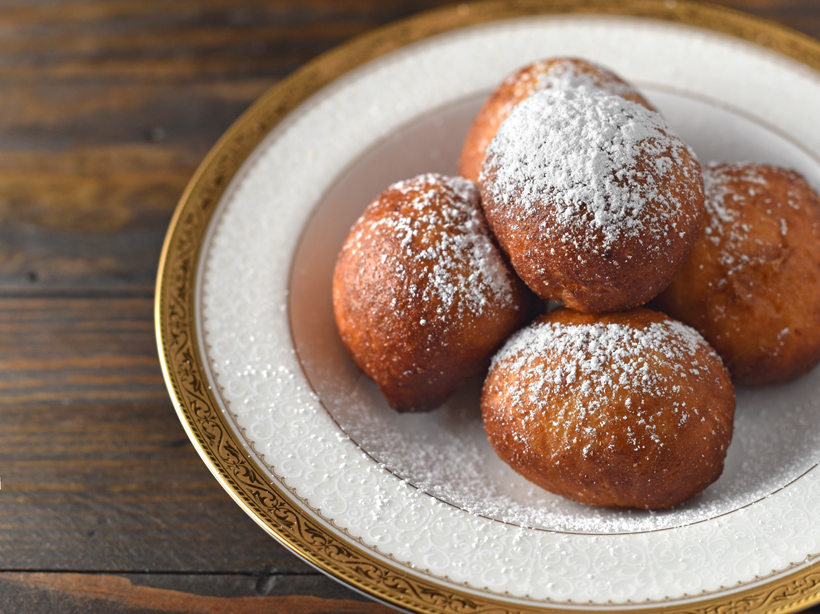
Poppy seed and vanilla pastry cream
Yields about 12 balls
1 vanilla bean
310 g whole milk
100 g heavy cream
80 g sugar
2 g powdered gelatin
50 g (about 3) egg yolks
20 g corn starch
20 g butter
35 g poppy seeds
- Split the vanilla bean lengthwise, and scrape out the seeds with a spoon.
- Place the milk, cream, half of the sugar, and the vanilla (both the pod and the scraped seeds) in a medium saucepan, and bring to a boil over medium-high heat. Whisk in the gelatin, and remove from the heat. Discard the vanilla bean pod.
- Meanwhile, in a separate bowl, whisk together the egg yolks, remaining sugar, and cornstarch. Progressively whisk the milk mixture into the egg yolk mixture. Return to the saucepan and to medium heat, stirring constantly with a spatula, until the mixture just begins to boil.
- Transfer to a bowl, and let cool for a couple minutes. If the pastry cream doesn’t look smooth, pass it through a chinois. Stir in the butter and poppy seeds until incorporated. Let cool some more, then cover and refrigerate until cold, a least 2 hours.
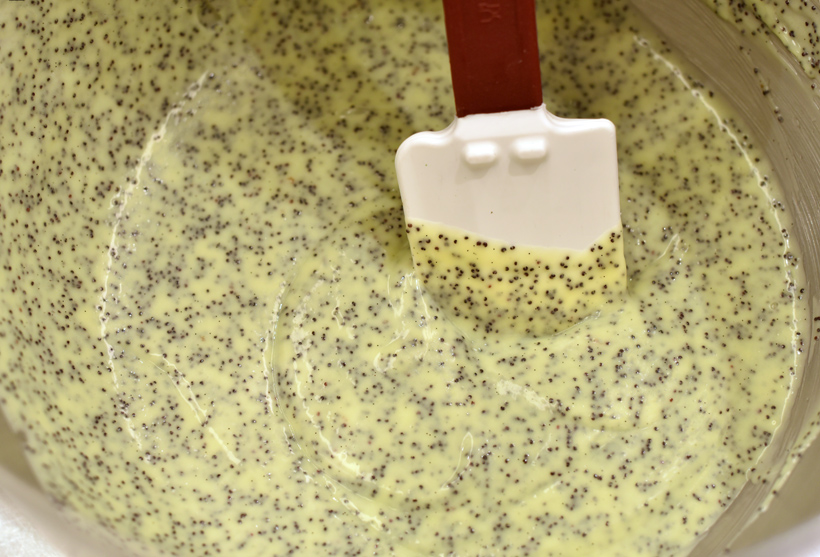
Crème de cassis pastry cream
Yields about 12 balls
250 g whole milk
100 g heavy cream
20 g brown sugar
60 g white sugar
2.5 g powdered gelatin
55 g (about 4) egg yolks
20 g corn starch
20 g butter
80 g crème de cassis
3 g pure vanilla extract
- Place the milk, cream, brown sugar, and half of the white sugar in a medium saucepan, and bring to a boil over medium-high heat. Whisk in the gelatin, and remove from the heat.
- Meanwhile, in a separate bowl, whisk together the egg yolks, remaining white sugar, and cornstarch. Progressively whisk the milk mixture into the egg yolk mixture. Return to the saucepan and to medium heat, stirring constantly with a spatula, until the mixture just begins to boil.
- Transfer to a bowl, and let cool for a couple minutes. If the pastry cream doesn’t look smooth, pass it through a chinois. Stir in the butter until incorporated, then stir in the crème de cassis and vanilla extract. Let cool some more, then cover and refrigerate until cold, a least 2 hours.
Spurgos dough
Yields about 24 balls
110 g whole milk, lukewarm
7.3 g active dry yeast
70 g sugar
220 g bread flour
220 g AP flour
2.2 g salt
300 g farmer cheese
220 g (about 4) eggs
30 g butter, diced and softened
oil spray
- In a small bowl, combine the milk, yeast, and a pinch of the sugar. Set aside for 5 minutes at room temperature.
- Place the remaining sugar, bread flour, AP flour, and salt in the bowl of an electric mixer fit with the paddle attachment. Mix on low speed to combine.
- Add in the milk mixture, the farmer cheese, and the eggs all at once, and mix on low speed until you have a rough dough.
- Gradually add the butter, one piece at a time, working each piece of butter into the dough before adding the next. Mix for 5 minutes on low speed, scraping the bowl with a spatula a few times. Cover with plastic wrap, and let rise in a warm place until doubled in volume, 1 1/2 to 2 hours.
- Punch down the dough, transfer to a floured surface, and use your hands to shape into a 2 cm thick rectangle. Line one or more hotel pans or baking pans with parchment paper, and spray liberally with oil.
- Working with wet hands, tear 24 nuggets (about 40 g each) from the dough, roll into balls, and place on the pans. Make sure to leave a lot of space between each ball, as they will expand. Cover with plastic wrap, and let rise in a warm place for about 45 minutes, until doubled in volume.
- If you want your spurgos to be perfectly round balls when finished, you can refrigerate the dough for 30 minutes, but be aware that they will be denser. I suggest skipping this step.

Assembly
Yields about 24 balls
canola oil, for deep-frying
cooking oil spray
spurgos dough
poppy seed and vanilla pastry cream
crème de cassis pastry cream
confectioners’ sugar (optional)
- Heat the canola oil to 175 C / 350 F in a deep-fryer or a large pot.
- Spray oil on your hands, because the dough is very sticky. Take each ball of dough one at a time, reshape into a ball — the spurgos will have spread while rising — and carefully drop into the frying oil. Fry until golden-brown on all sides, flipping regularly with a skimmer. (After frying a few spurgos, let the oil return to 175 C / 350 F before frying any more.) Transfer to a bowl lined with paper towels and let cool for at least 15 minutes.
- Transfer each pastry cream to a pastry bag fit with a small round pastry tip (or just cut the tip of the pastry bag, eschewing the pastry tip).
- Using a pairing knife, slit a small hole into each fritter, and swirl the tip of the blade inside to create a cavity. Pipe in some pastry cream until it just starts to ooze out. Wipe off the excess pastry cream, and repeat with the remaining spurgos. You should have enough pastry cream for 12 spurgos with poppy seen and vanilla, and 12 with crème de cassis.
- Dust with confectioners’ sugar if you like, and eat as soon as possible!

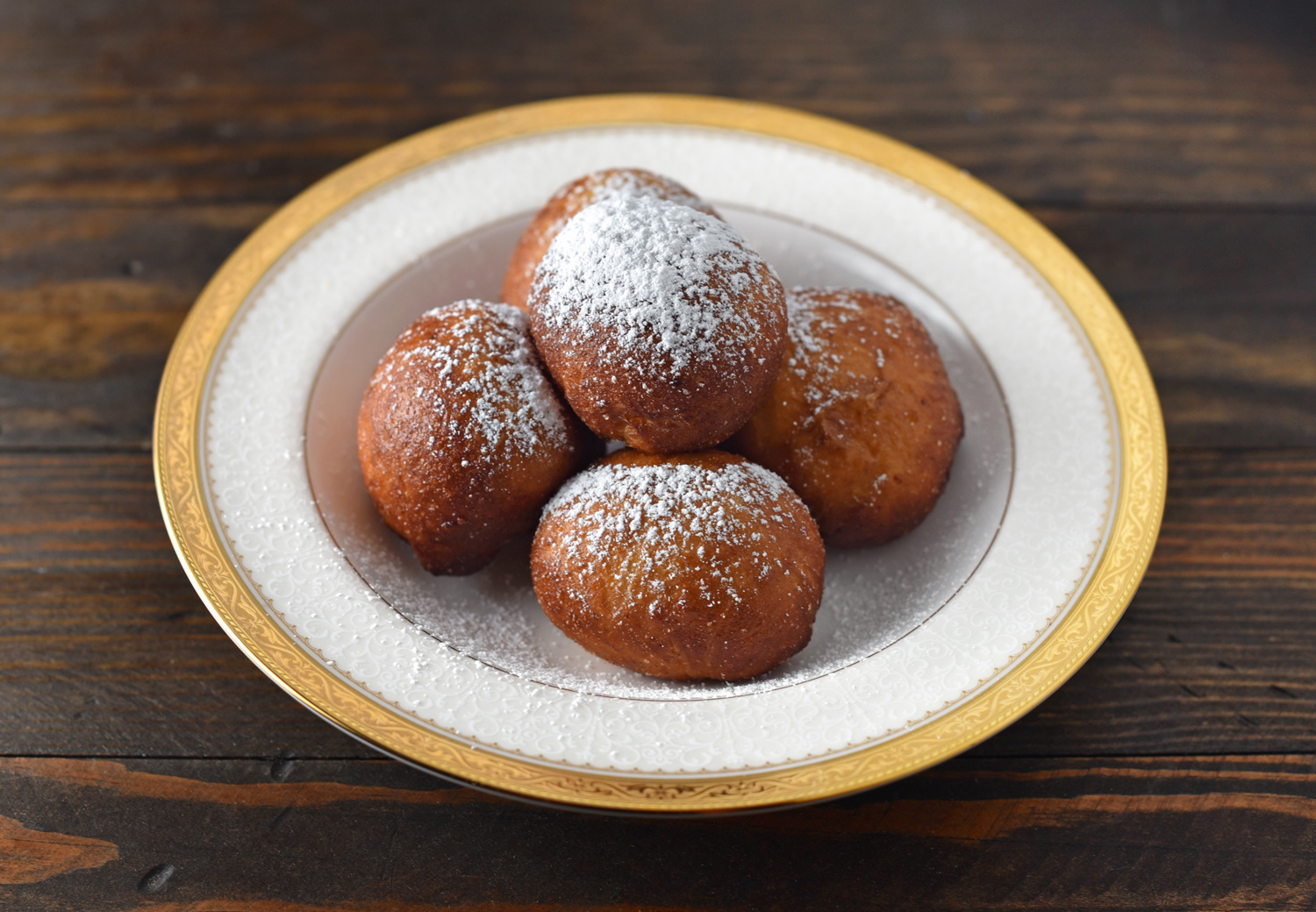
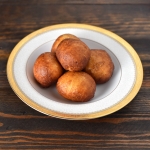
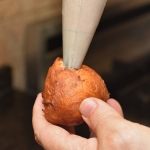

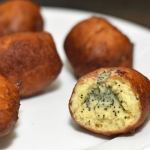
1 comment
these look stunning and so yummy.